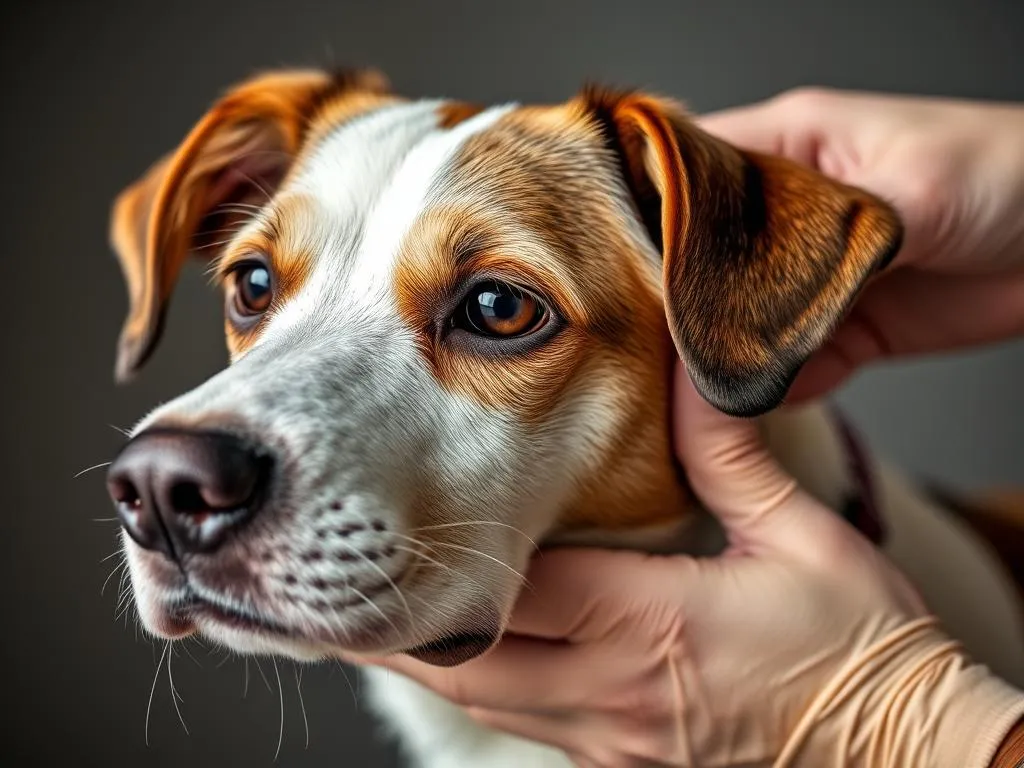
Introduction
Maintaining ear health in dogs is crucial for their overall well-being. Dogs are prone to various ear problems, such as infections and wax buildup, which can lead to discomfort and more severe health issues if left untreated. Regular cleaning of your dog’s ears serves as a preventive measure, helping to avoid these complications. This comprehensive guide will provide you with all the information needed on how to clean dog ears safely and effectively.
Understanding Dog Ear Anatomy
Structure of a Dog’s Ear
A dog’s ear consists of three main parts: the external ear, middle ear, and inner ear. The external ear is visible and includes the ear flap (pinna) and ear canal. The middle ear, located deeper within, contains the eardrum and is responsible for transmitting sound vibrations. Finally, the inner ear is essential for balance and hearing, housing the cochlea and vestibular system.
The shape of a dog’s ear can significantly affect its ear health. Breeds with floppy ears, like Cocker Spaniels, often experience more ear issues because their ear flaps can trap moisture and debris. In contrast, upright-eared breeds, like German Shepherds, typically have better airflow to their ears, reducing the risk of infections.
Common Ear Issues in Dogs
Several common ear problems can affect dogs, including:
- Ear Infections: Often caused by bacteria, yeast, or parasites, ear infections can lead to redness, swelling, and a foul odor. Symptoms may include scratching at the ears, shaking the head, and discharge.
- Wax Buildup: Excessive wax can accumulate in the ear canal, leading to discomfort and potential infections. Signs of wax buildup include ear odor and visible debris in the ear.
- Allergies: Allergies to food or environmental factors can lead to inflammation in the ears, exacerbating existing conditions or causing new issues.
Understanding these potential problems is essential for effective ear care.
Preparing for Ear Cleaning
Essential Supplies Needed
Before you begin the process of cleaning your dog’s ears, gather the necessary supplies:
- Ear Cleaning Solution: Choose a vet-recommended solution designed for canine use. Avoid using alcohol or hydrogen peroxide, as these can irritate the ear.
- Cotton Balls or Pads: Soft cotton materials are ideal for cleaning without causing damage.
- Tweezers: If your dog has excess hair in their ears, tweezers can help remove it gently.
- Treats: Keep treats handy for positive reinforcement during and after the cleaning process.
Choosing the Right Time and Place
Timing is vital when cleaning your dog’s ears. The best times to do this are:
- After a bath, when the ears are clean and dry.
- During regular grooming sessions.
- When your dog is calm and relaxed.
Selecting a comfortable environment, like a quiet room, can help ease your dog’s anxiety during the process.
Step-by-Step Guide: How to Clean Dog Ears
Step 1: Assessing Your Dog’s Ears
Before you begin, take a close look at your dog’s ears. Check for signs of dirt, wax, or infection, such as swelling, redness, or an unusual odor. If you notice any of these signs, consult your veterinarian before proceeding.
Step 2: Gathering Your Supplies
Recap your supplies to ensure you have everything you need:
- Ear cleaning solution
- Cotton balls or pads
- Tweezers (if necessary)
- Treats for positive reinforcement
Step 3: Positioning Your Dog
Position your dog in a comfortable area where they feel secure. You may want to have someone hold your dog, or you can gently place them on your lap or a stable surface. Speak soothingly to keep them calm.
Step 4: Applying the Ear Cleaning Solution
Carefully apply the ear cleaning solution into your dog’s ear canal. Follow these tips for effective application:
- Hold the bottle upright and avoid touching the ear canal with the tip.
- Squeeze the bottle gently to release the solution.
Step 5: Massaging the Ear
After applying the solution, gently massage the base of your dog’s ear for about 20-30 seconds. This helps distribute the solution throughout the ear canal, breaking up debris and wax.
Step 6: Wiping Out the Ear
Use a cotton ball or pad to wipe the inside of your dog’s ear. Be gentle and avoid inserting anything deep into the ear canal. Dispose of the used cotton ball in the trash. If you notice excess solution or debris, repeat this step until the ear appears clean.
Step 7: Rewarding Your Dog
Once you’re done, reward your dog with a treat and plenty of praise. Positive reinforcement makes the experience pleasant and encourages your dog to cooperate in future cleanings.
Post-Cleaning Care
Monitoring for Issues
After cleaning your dog’s ears, monitor them for any signs of irritation. Look for redness, swelling, or discharge. If you notice any abnormalities, consult your veterinarian.
Frequency of Ear Cleaning
The frequency of ear cleaning depends on your dog’s breed and activity level. Generally, dogs with floppy ears may require cleaning every 1-2 weeks, while those with upright ears may only need it once a month. Always consult your vet for personalized recommendations.
When to Seek Veterinary Help
If your dog exhibits persistent discomfort, excessive scratching, or signs of infection, contact your veterinarian. Early intervention can prevent more serious health issues.
Tips for Maintaining Ear Health
Regular Check-Ups
Regular veterinary check-ups are essential for maintaining your dog’s ear health. Your vet can provide guidance on proper care and identify any potential issues before they become serious.
Preventive Measures
Take preventive measures to keep your dog’s ears healthy:
- Dry Ears After Baths: Ensure your dog’s ears are dry after baths or swimming, as moisture can promote infections.
- Routine Grooming: Keep the hair around the ears trimmed to improve airflow and reduce wax buildup.
Diet and Ear Health
Proper nutrition plays a significant role in your dog’s overall health, including their ears. A balanced diet rich in omega fatty acids can help reduce inflammation and promote healthy skin and coat, which in turn supports ear health.
Conclusion
Regular ear cleaning is an essential aspect of dog health care. By understanding the anatomy of your dog’s ears and following a proper cleaning routine, you can help prevent common ear issues and ensure your furry friend remains comfortable and healthy. Establishing a regular ear cleaning routine will make it easier for both you and your dog to manage their ear health proactively.
Frequently Asked Questions (FAQs)
How often should I clean my dog’s ears?
The frequency of cleaning depends on the breed. Floppy-eared dogs may need ear cleaning every 1-2 weeks, while upright-eared breeds may only require it monthly.
Can I use regular cotton swabs to clean my dog’s ears?
No, regular cotton swabs can push debris further into the ear canal. Instead, use cotton balls or pads designed for ear cleaning.
What should I do if my dog resists ear cleaning?
If your dog resists, try to create a calm environment. You can also reward them with treats during and after the process to make it more enjoyable.
Are there any natural remedies for dog ear cleaning?
While some natural remedies exist, it’s best to use vet-recommended cleaning solutions to ensure safety and effectiveness.
When should I consult a veterinarian regarding my dog’s ears?
Consult your veterinarian if you notice persistent irritation, excessive wax, or signs of infection, such as discharge or bad odor.









